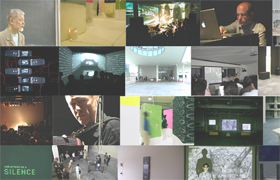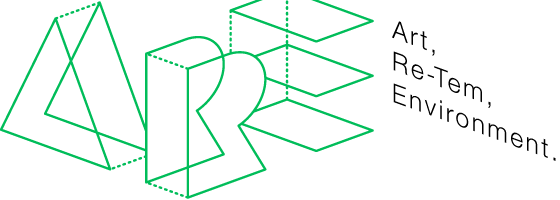

Variations on a Silence Project for a Recycling Plant Art/Music/Architecture etc., 2005
Schedule: 13 May (Fri.) - 29 (Sun. ), 2005
Opening hours:
[Mon. To Fri.] 13:00_19:00
[Sunday] 12:00_17:00
Place: Re-Tem Tokyo Factory
Artists:Yasunao Tone, Christian Marclay, Kazuya Kondo, Pol Malo, 710.beppo, Kei Hirakura
Presented by Re-Tem Corporation
Building designed by O.F.D.A.
Coordinated by: SETENV
Cooperated by: Gallery Koyanagi, Shiraishi contemporary art
Technical supported by Media Produce Japan Co.,Ltd
Audio-Visual requirements supported by Yamaha Corporation, Pioneer Corporation
Sponsored by: The Nomura Cultural Foundation
http://variations.jp
Related Events
Variations on a Silence 《Concert》
Artists:Christian Marclay + Sachiko M / Yasunao Tone + Hecker / Kazuya Kondo / 710.beppo
Site:UNIT, Daikanyama
Date:11 May (Wed.) 18:00 OPEN / 18:20 START
Christian Marclay + Flo Kaufman "Tabula Rasa"
Tabula Rasa, that sound is creating only with turn tables, was performed by Christian Marclay and Flo Kaufman for the first time ever in Japan.
Site:Re-Tem Tokyo Factory
Schedule:13 May (Fri) 18:30 OPEN / 19:00 START
710.beppo "Vibrations on a Silence"
Site:Re-Tem Tokyo Factory
Date:14 May (Sat.) and 29 May (Sun.)
Profile in 2005
Yasunao Tone
Yasunao Tone was born in 1935 in Tokyo.
Tone started playing improvised music since around 1958. In 1960 he organized an improvisation band‘Group Ongaku’ (Group Music) with Takehisa Kosugi, Shuko Mizuno, and Mieko Shiomi, and since then has performed cross-border activity between art and music. He collaborated with‘High Red Center’and‘Ankoku Butoh-ha’(Dancers in the Dark), and contributed many articles to art and music magazines. He also got acquainted with George Maciunas through Toshi Ichiyanagi, and joined Fluxus.
Leaving his mark on Japanese avant-garde art and music scene, in 1972 Tone went to U.S. and thereafter made New York his base. With the performers such as John Cage and David Tudor, he often joined the events organized by Fluxus and Merce Cunningham Dance Company. Since 1985, he started giving performances with prepared CDs. In 1990s, his works were released on CD. They drew considerable attention and were received with admiration in the light of sound art and electronic music after techno. In 2002, he won the gold prize for digital music in Ars Electronica, an international media art festival.
One of the representative works of Tone is‘Wounded Manユyo’series, which converts the Chinese letters constructing some 4500 poems in Manユyoshu (A Collection of a Myriad leaves) into digital images and outputs them as audio data.
Based on theoretical observations on audio media and technology, the art of Yasunao Tone transcends the border of music by rejecting any arbitrary manipulation. It criticizes improvisation as well as self-sufficient musical composition, and aims at destruction and renewal of music itself.
Christian Marclay
Christian Marclay was born in 1955 and now lives in New York.
In 1979, Marclay began giving performance with records and turntable, which was one of the earliest examples of using turntable as musical instrument.
Since 1980s, Marclay has also produced visual images and plastic arts made with the things connected with sounds such as records, telephones, musical instruments, and magnetic tapes. His works take up sounds and our responses to sounds in the historical and cultural context, and present themselves to us as the“memory of sounds weユve never heard.”
Marclayユs important recorded works are‘Record without a Cover’(1985) which is distributed without jackets and made scratches on them part of the work, and‘More Encores’(1989) which is made by gathering fragments of various records from opera, rock to John Cage and gluing them together into a single disk. He has collaborated with a variety of artists such as John Zorn, Lee Ranald and Thurston Moore from Sonic Youth, and Otomo Yoshihide.
Since his exhibition in the Venice Biennale 1995, Marclay has become one of the artists who attract the heaviest international attention. He continues his crossover activities between art and sound.
*In 2004, he participated in group exhibitions of MOMA, ICC and took a performance in Tate Modern. Several exhibitions are planning at some overseas museums in 2005, as well.
Kazuya Kondo
Kazuya Kondo, an artist and a graphic designer, was born in Tokyo in 1960 as a son of a painter. In 1982, he graduated from Seijo University with major in arts and literature. He had studied under Keiji Asanuma and majored in aesthetics and cinema studies. He studied graphic design at Kuwasawa Design School and graduated from there in 1985. In 1992, he founded Kazuya Kondo Inc. and started his career as a graphic designer. He works mainly on art-related editorials, book design, and poster design.
Designing visual images and catalogues for contemporary dance and modern art, Kondo aims at a sensuous reproduction of peculiar reciprocating motion between works and audience by way of print media. His unconventional and conceptual catalogue design is highly appreciated as“another exhibition.”Moreover, by the design of The Complete Works of Kobo Abe (Shincho-sha), he presented a new possibility for the book design of literary works and won the Tokyo ADC Hiromu Hara Memorial Prize in 1998.
Since 2002, Kondo has presented visual installations on Abeユs last workroom and his unfinished novel saved on a floppy disk. In these works he thematizes the reproduction and recombination evolved in the moment of creation. He offers the cross-cutting works between art and design and creates an everlasting world where reality and its images are endlessly reflecting each other like in a mirror.
http://www.kazuyakondo.com
Pol Malo
Pol Malo was born in 1967 in Nuremberg, Germany. He studied philosophy and liberal arts at the University of California, Berkeley, the University of Wisconsin, Madison among other universities, followed by post-graduate studies at the Media Art Academy, Cologne.
Pol Malo started residing in Tokyo in 1998. Through getting involved in the music world here and exchanges with Yamabe Keiji (Los Apson), Nakahara Masaya, Nogai Noriyasu (Kurara Audio Arts) and others, he started the label'Cha-Bashira records', later evolving into a artist-run record shop that also had small exhibitions.
Since 2002 Pol Malo returned to focusing on making installations and has shown his work in group shows such as "Komorebi Exhibition”(Contemporary Art Gallery, Art Tower Mito, 2003) and“Roppongi Crossing: New Visions in Contemporary Japanese Art in 2004” (Mori Art Museum, 2003). He also had a solo show at the gallery SCAI The Bathhouse in Tokyo in July 2004. In 2003 and 2004 he was guest lecturer at Musashino Art University.
“Reconstruction of reality”is Pol Malo’s central subject as an artist; he puts his concept into writing by examining how men creates reality, and presents his work as what is in itself an environment.
The 'construction of reality' in the collective imaginary, neurologically and biologically, and in terms of spaces has been one of the themes in his work. Other themes that often overlap with this one, are the sketchy and unfinished nature of perception and navigation through what each sees as one's cosmography, as well as spaces and realities of in-between-cultures. He creates installations that function as environments and often offer the visitor to take part of the work with them made for this purpose.
710.beppo
710. beppo is a unit by vokoi and Ken Furudate whose activities range from audio and visual performances to space design.
710. beppo has actively joined the live events of electronic and experimental music at home and overseas. They circuited five countries in Europe on their 2003 tour that arouse much attention. In October in that year, they made a visual performance at the Pompidou Center, which was broadcast by French TV network.
In the autumn of 2003, they presented an installation which thematized sound as physical phenomenon at a prefab on the roof of a vacant building. Since then they have been working on site-specific installations which sets their artistic direction toward architecture.
Ken Frudate is also a member and an organizer of The Sine Wave Orchestra, the Honorary Mention Prize winner at 2004 Ars Electronica. Their live performance is an ensemble of different sine wave frequencies made by each different performer invited for the occasion.
Kei Hirakura
Kei Hirakura was born in 1977.
After graduating from ICU with a degree of philosophy, Hirakura majored in philosophy, cinema studies and ecological psychology at the Graduate School of Interdisciplinary Information Studies in the University of Tokyo. He started producing works from around 1998, and organized an art unit‘bleakground’in 2000. In 2001, he was accepted at‘Modern Art 2001 NAGOYA,’the opening competition and exhibition for Nagoya Citizenユs Gallery Yada (the competition was juried by Noi Sawaragi, Furamu Kitagawa, and others). In his installation at that competition, the audience was made to move on a rubber seat spread on the floor seeing the graphics arranged on the wall: the images superimposing drawings and some letters.
In addition to drawings, installations and textual productions, Kondo also does researches on film and modern art. Studying on“the principle of image association,”he explores a horizon where one can both construct a conceptual framework and practice production of work.
The followings are the major articles written by him:“Godardian Association of Images and the Problem of‘Correctness,’”Hyoshobunka-ron Kenkyu, 3 ;“Decapitation, Table, and Anti-optics: On Pablo Picasso’s Les Demoiselles d’Avignon,”contained in a forthcoming book from Mirai-sha.
http://hirakurakei.com/

